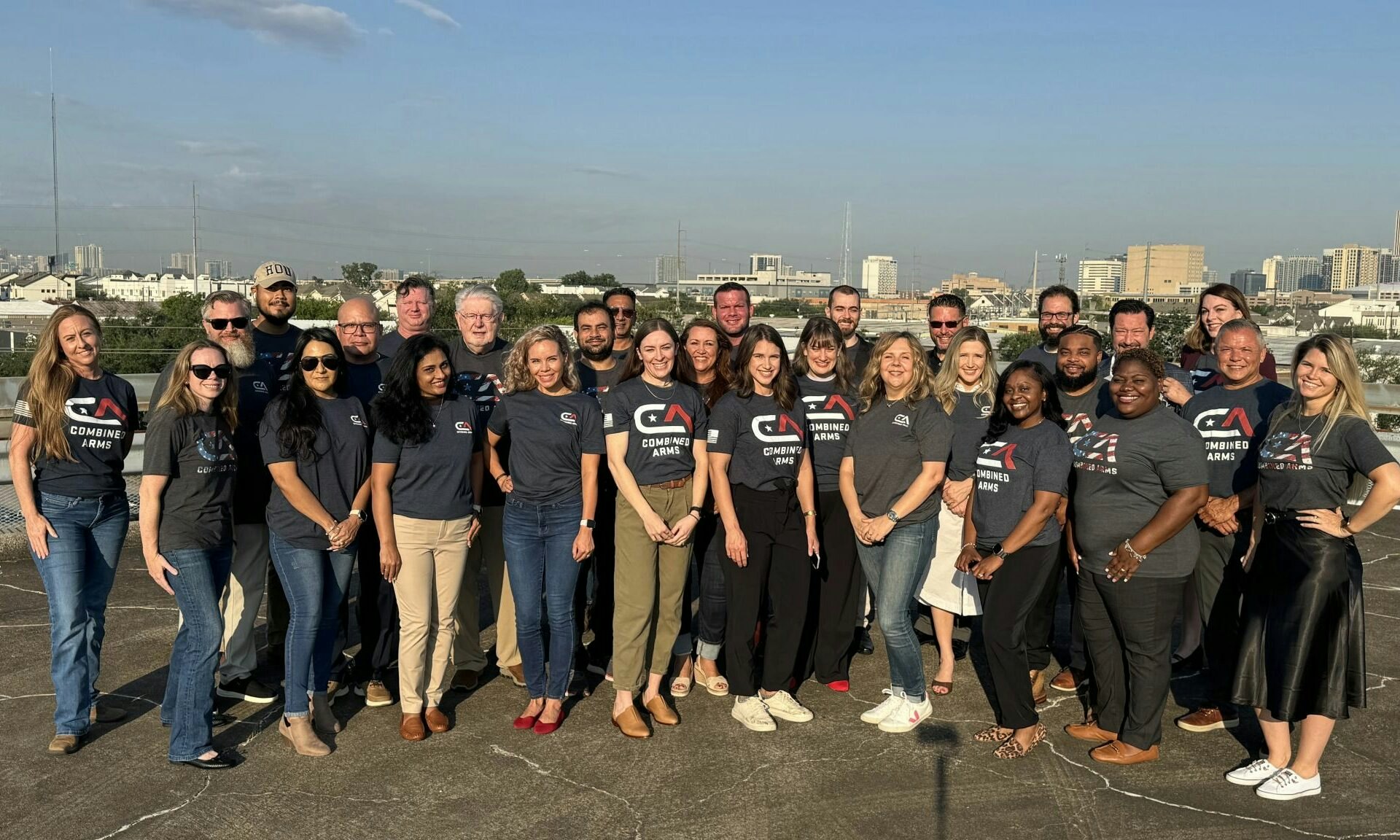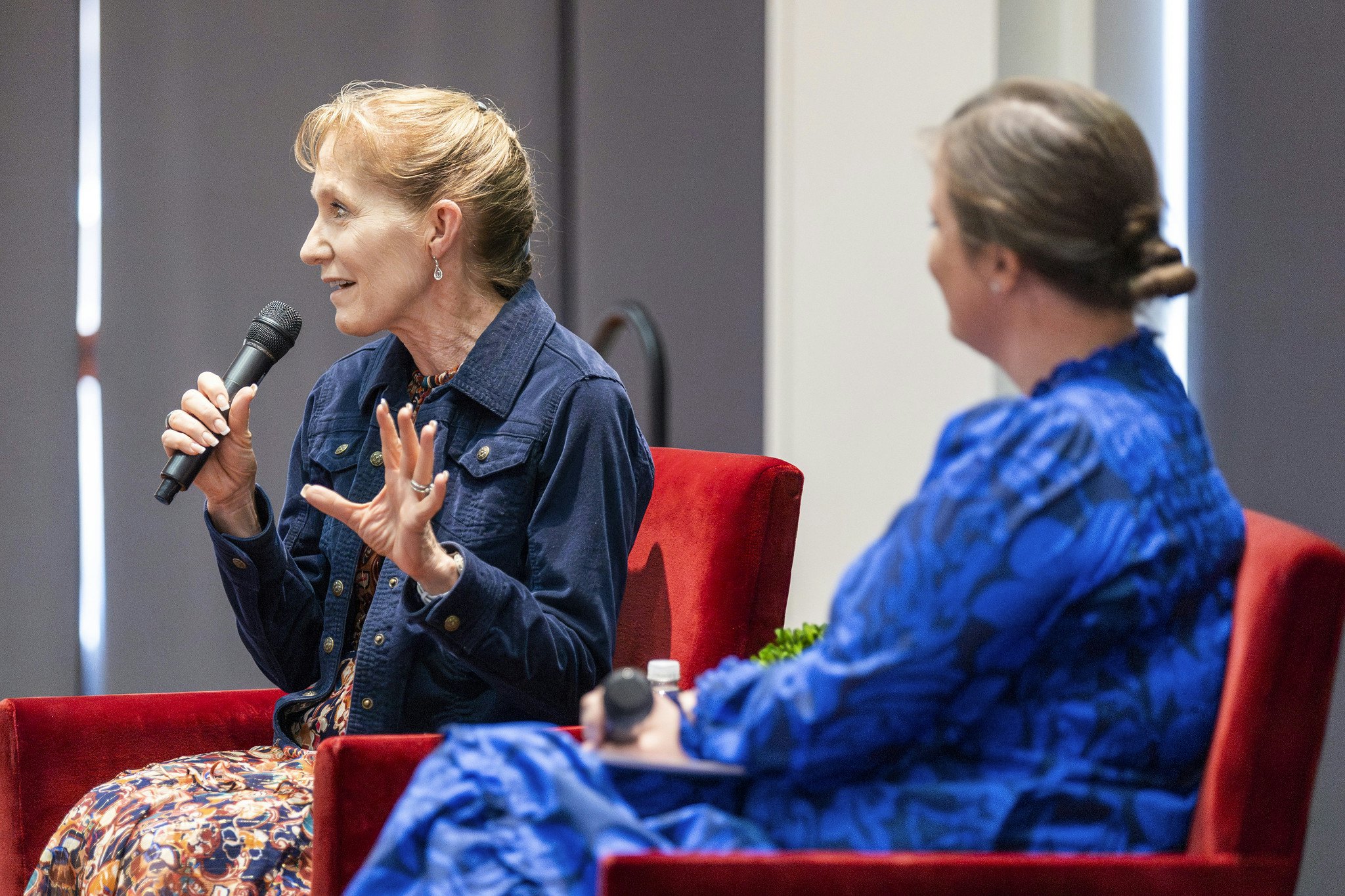Q&A with James D. Rodriguez, the U.S. Department of Labor’s Assistant Secretary for Veterans’ Employment and Training Services (VETS)
Your personal journey is very unique, beginning your military career as an enlisted service member right after high school and now serving as an Assistant Secretary. From your own self reflection, what were the lessons learned in your leadership trajectory?
I’ve been fortunate. I’ve had some really great mentors along the way. My military career, post-military career in the business community. I had a mentor, a retired Army lieutenant colonel when I got into the defense and aerospace company. And he spearheaded me along the way when I got hired as a program manager and he made me look at my next career differently. Because he said, “These are the things you have to do in order to reach whatever your goal is.” And at the time, my goal was to be a vice president in this defense and aerospace company. And he said, “These are the things you have to do to prepare yourself to reach that goal.” And he laid out a plan for me, and it was basically get educated on various things that I was not educated on. One of those being finance, for example: How do industries utilize a balance sheet?
How do you do profit and loss? Things like that. Those were foreign words to me as a retired marine. But he said, “If you want to be a leader in an organization, in any organization, you have to have an understanding of how an organization operates wholly.” So they invested in me. I think that was the biggest thing. The company invested in me, sending me to Babson College, where I spent time learning about financials. And that really helped me understand how a corporation operates, what EBITDA was, what profit and loss was, all these different things, how to do earnings statements from a different level. And so that kind of set a trajectory for me to really open my aperture towards learning things that I did not have a history in. And I think because of that, I’ve always been a learner.
They enhanced my ability to want to find new ways to continue my education no matter what role I’m in. I do the same thing now in my current role: I’m an avid reader and I look at what CEOs are doing, what are they reading – how are they looking at the future of work? And then I take that into my government perspective and I bring that to our organization and try to look at ways where we can make our organization more effective and more efficient, especially when we’re dealing with restraints of a budget, if you will, because of the fact that we have to operate within a budget and we have to utilize [the] resources that we have to support the veteran community.
We have to understand how to be more efficient in that process. We’ve all learned how to do that, but part of that has become a standard for us because we’ve embedded that in our processes. [When] we go through planning and we create an agency management plan, for example, that allows us to look at the future years of what our budget looks like and how we can get our programs to meet the needs of our community [while] staying within the confines of that budget.
So all of my corporate experience has really helped the government organization that I’m fortunate to lead because of the fact that the investments were made in me throughout my career. And I think that’s one of the things that oftentimes organizations fail to recognize – that the military invests a whole lot of money in someone whether they do four years or 20 years. And that in many cases could be millions. I don’t know if that actually worked in my case, if they got [their money’s] worth on that, but, truthfully, that happens all the time.
So one of the things I speak to corporate leaders about is, think about the professional development investment that the military has made in an individual who served in uniform and think about someone who just has a four-year college degree, two different career paths, two different sets of skill sets. But now you take that professional development from the military and you support that with education on top of that, and you have a phenomenal employee and it’s good for business. We’ve really taken that approach within the government space – getting an organization to understand why hiring veterans is good for business.
What surprised you most in your transition from military service to civilian life?
I was very fortunate [because] when I transitioned to BAE Systems, it was a defense and aerospace company, so I was still closely affiliated with the military in some sort because of the nature of our business. So I started to interact with veterans who are doing the work because they were still passionate with that connection to the military community and were using their skill sets from the military to do the work. One of the things that surprised me the most is that when people transition out who are not associated with an organization like BAE Systems – or any other defense company or any other organization [through which] they still had a military affiliation post-military service – is how oftentimes everyone struggled in that transition process a little bit because of that loss of identity, loss of connection, that loss of tribe. Everybody works on it differently, but I’ve seen it in every rank.
I’ve seen it in conversations with so many people in all the services that when they were not closely associated to the military somehow – and everybody’s excited to get out of the military when they’re getting out for the most cases – but at the same time, they quickly realize that maybe getting that complete separation, it’s probably not the best idea. So that surprised me because I thought I was ready to retire and move on, and I was. Fortunately, I had a better transition than a lot of people just because of that continuous connection to the military community, but seeing how it affected people surprised me the most.
Because of that, I continue to work around the military community, really help them understand that there is value in staying connected to the military community post-retirement or post four years of the military, whether you do it through volunteer work, whether you do it through your everyday work, those type of things are inherently important. But also that people often forget that the spouses transition, the children transition as well. And so, it’s a holistic transition. But oftentimes we focus on the veterans challenges with transition. And in order to make sure that everybody’s successful, we have to look at the entire family makeup and make sure that they are successful. That’s why I’m such an advocate for military spouse employment as well.
At Department of Labor VETS, you’re advancing timely and interesting initiatives. How do you effectively communicate these initiatives to veterans, spouses, and their families, as well as other stakeholders? Is there anything in the pipeline you are most excited about at this time?
We’ve had a couple that have been in pilot phase, one we just made a permanent program. For example, the employment navigator partnership program. I’m proud to say that was a pilot and that was geared toward ensuring that we had a one-on-one conversation with individuals who were still not prepared for that transition out of the military service.
Everybody goes through the transition assistance program, but not everybody is completely prepared to transition out. And so, through efforts at certain military installations around the country, and we have 60 partners now that help us prepare a warm handoff, if you will, to someone who is going into specific industries. We have partners in construction, IT, cyber, finance, pretty much every industry that you can think of right now, we have partners in, that provide in many cases wraparound services to help that individual transition to their next career post-military service.
And that has been a game changer. We are seeing that people who utilize the employment navigator program, they’re actually getting higher wages when they transition out and getting employed faster than someone who does not go and see an employment navigator. They just go through the traditional TAP program. So we’re seeing great data there and we’re looking to continue to build that out.
The other one is an off-base transition training program that has been in pilot phase and still is for another two years. That has been a game changer for veterans who’ve been out in the military for a while. I just visited a site in Fort Worth, Texas, and had great conversations with some men and women there. And we’ve had a 260% increase in participation of veterans across the 20 sites that we have in 26 metropolitan cities around the country where we have the highest unemployment rate of veterans.
So any veteran who’s been out of the military for a while could come back now and take these type of TAP courses that they had on active duty, but a little bit different, a little bit more succinct and focus on the veteran community, helping build their resumes, LinkedIn profiles, job connections, access to different resources that they didn’t know they had access to, and making those connections as well. And so that program in itself has gone exceptionally well.
We are also providing grants to the states through a formula grant process, where we give them grants based off of the amount of veterans they have in their states and in their communities.
We’ve expanded our aperture for allowing access to more veterans to utilize those services. So any veteran with a disability can utilize that service. A caregiver can utilize that service. Military spouse, guard reserve members can use that service. And we’re looking to continue to expand that even more so because of the fact that we know that they are the ones who have the front row seat to where our veterans are in the communities.
As someone who has both private and public sector experience, what opportunities do you see for collaboration in advancing the initiatives you are leading at the Department of Labor?
It’s inherently important to us to expand our public private partnerships. That’s why I’m here. And I think one of the things you asked me earlier is how do we really define what we’re doing in a different sense? But outreach is our most critical thing that we could do as an agency. And we’ve done that. We’ve been on a campaign for the last three and a half years I’ve been here to really get everybody to understand the value of DOL VETS and that we are the federal arm responsible for veteran employment.
We worked across the board with our colleagues at DOD and the VA, but we have different missions. But the ultimate goal is still the same for all of us to ensure that that veteran has the resources he or she needs to be successful. And so we do a lot of outreach. And a lot of that outreach is actually to partners that have not traditionally been associated with DOL VETS, but yet they’ve had a stake in hiring, in training and educating veterans. And there were military spouses. And so, we’ve really looked at how can we strengthen those relationships.
I’ve hosted a series of roundtables with subject matter experts in various industries. Our team has worked to strengthen our partnerships and apprenticeships … as another opportunity for career paths post-military service. And that has expanded tremendously. We worked very closely with the White House to strengthen those apprenticeship partnerships. We work with union leaders as well to figure out how we could get more veterans into unions because we know that that’s a pathway to the middle class. And we’ve really focused on finding organizations who are doing great work and strengthening the work that they’re doing through a solid partnership that we have created with them. And part of that is through our employment navigators I mentioned earlier, through our off-base transition training.
But one of the things that I wanted to also talk about is what we’re doing to support military spouse employment. Military spouse unemployment is at an exceptionally high rate right now compared to the national average. I think the numbers are roughly 21% unemployment rate for military spouses. And they’re highly educated. 62% of military spouses have an associate degree or higher, but yet they’re underemployed more than any other demographic in the country. And so we worked very closely with the White House when they developed the executive order to support federal employment and military spouses. And we’ve also focused on strengthening our partnership with companies who want to hire military spouses.
And there’s various partners that have done such a great job of being innovative and finding ways to strengthen their efforts to hire military spouses. And always, the reason I talk about that is because having a military spouse who is gainfully employed and has a career in herself is equally important as that veteran because of the fact that, in this economy, you need dual incomes in most places. And so if you take away one of those incomes right now, you have challenges for that entire family dynamic. And we want to ensure that that’s strengthened by making sure that the spouse continues to have career opportunities.
From your perspective, what are the most pressing challenges facing veterans and their families today?
[The] economy is tough on everyone…. Oftentimes, we forget that [veterans] have to look for ways to be economically sustainable within their families. And when they’re looking at the type of employment that they have relevant to where they live in certain economies, sometimes that’s not as sustainable. They sometimes face other barriers that are separate from nonveterans just because of their military service.
Getting them into employment, meaningful employment, that really helps them figure out what their next career is post-military service is one of the most important things we do. Getting them to understand, how do we build generational wealth, but at the same time, how do we build generational health? Because in order to have a good sustainable career post-military service, you have to have both. They’re both tied completely together.
So having a good solid health platform for those individuals as well as how that translates into being a good employee, having a good career next post-military service, to me are things that we are constantly looking at – ways to help improve the veterans’ livelihoods when they transition out of military. And I think all of that is tied to everything else that nonveterans experience, but just a little bit different[ly] because of that military service.
From your personal experiences, and particularly, as we think about current recruitment challenges, how would you inspire service to country and one’s personal and professional growth through military careers?
I think this goes back to looking at how we value the professional development. We have military service; how do we get them to understand that military service is going to set them on a trajectory that’s very positive in most cases? I don’t think you can talk to pretty much any veteran that has not had a positive experience on the military service and benefited from that. Now, there are some who maybe had a couple of bumps in the road after military service, but they’ve learned something in that process of serving in uniform. And I think that in itself proves true when you speak to veterans who have gone on to do great things in industries, who’ve gone on to lead organizations, who’ve gone on to be politicians. Who’ve gone on to be CEOs of companies – and I can name various leaders in every industry because of their military service who will state that that is something that set them on a career trajectory for success.
That message has to resonate with folks in order to look at why military service is a good career path for them. And I think if you look at the educational, the benefits, the professional benefits that come, or professional development that comes with that military service, it’s unmatched. And CEOs and corporations who recognize that benefit from that military service.
I was speaking with General [Johnny] Davis, the Commanding General of Army Recruiting Command at Fort Knox, Kentucky, last week. We had a great conversation about this same topic. And I said, what we have to do is continue to explain to men and women who are looking at service as that this is an opportunity for a lifelong career. So even though you serve in uniform for a certain period of time, there are resources not afforded to a lot of nonveterans that are afforded to you because of your military service.
Our agency is designed exactly for that. So if you get out of [the] military and you’re looking for employment, we’re here to help you. If you’re out of the military, you’re going to be able to utilize the GI Bill for you and or your family in many cases to get educated. And so, I think we have to explain to them that way. There’s so much talent out there. One of the challenges is really looking at the younger population who actually can serve and qualify to serve. And that is something I know DOD is looking at. When you look at the amount of people who are qualified to serve between 18 to 24 years old, that number is small.
So what I tell everybody [is] that means that the ones who are serving are your most highly qualified, they’re the most educated. I think the average age of an enlisted member in the Army is 22 years old. So they’ve done something prior to joining the Army as an enlisted member, and they realized that in order to build that career, they join the military to get those things that I just described. And so, there’s a lot to offer by military service. I sit in my role right now because of my military service. My two daughters are highly educated because of that military service.
So this goes back to what I mentioned earlier, creating that generational wealth is something that is often not explained about military service. And so, it’s not only impacting that veteran, it’s impacting that veteran’s family members and then their family members down the road. So I think that’s how I always try to explain it to everyone, that it’s not just what we are doing because of that individual service. It’s the tail end that comes along with that that allows us to see the overall value of that service.






























